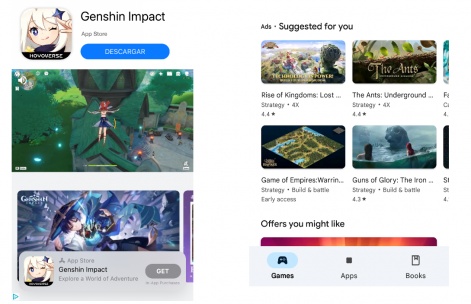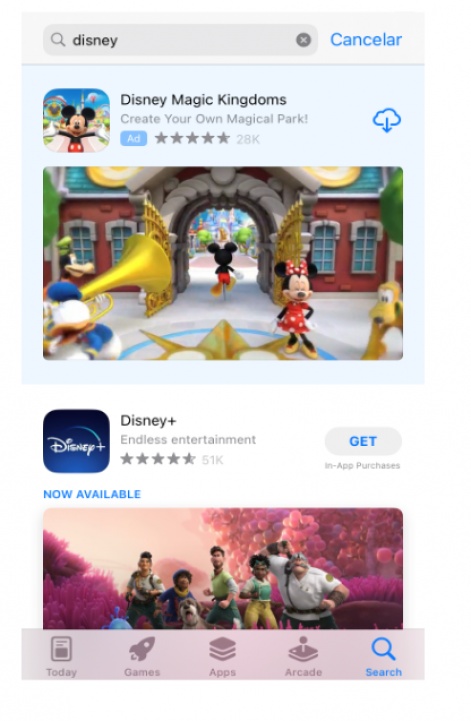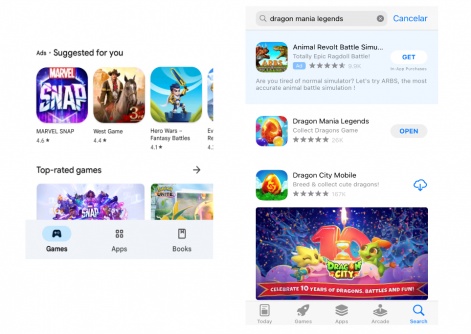Paid user acquisition (UA) and Organic app store optimisation (ASO) strategies tend to be planned individually. Both work towards their targets without sharing learnings or synchronising the common points where their performances collide.
The impact of ASO metadata on UA ads keeps increasing as more networks expand the ads set that display them. Learning how organic metadata impacts UA strategies while sharing learnings from both teams’ strategies is crucial for a successful strategy on the mobile stores.
Claudia Trujillo, ASO Expert at Gameloft, shares how sharing learnings and understanding the impact of ASO on UA, and vice versa, can enforce the synergies between both strategies for performance improvement on the stores.
Understanding the connection between UA and ASO
ASO and UA are interconnected marketing processes that influence each other’s performances and results. By generating a synergetic exchange of learnings, both strategies (and teams) can work together to improve each other’s weaknesses. This means: what cannot be achieved by solely applying ASO Organic Strategy (bigger amount of downloads, higher keyword rankings, etc) can be obtained with a push of downloads from UA - Paid Campaigns.
How can ASO learn from UA results?
The UA ads have useful learnings for the ASO strategy:
- Top performing visual assets: ASO can take the creatives or concepts from UA ads and adapt them to the store guidelines and policies. These can be AB tested to see if the organic audience will respond to them the same way the paid one did.
- High achieving keywords: UA can share the keywords that obtain more downloads, and ASO can apply those on the On-Metadata written assets.
- High converting localizations: based on which countries and languages UA ads are performing better for downloads and monetization KPIs, ASO can prioritise optimising those store listings.
What elements can UA learn from ASO?
The organic performance can share learnings for the paid strategy:
- AB Test of visual assets: well-performing iterations of visual assets that can be used on UA ads or serve as inspiration for creatives.
- Best performing keywords: learnings from which keywords are ranking higher and gathering more downloads can be useful for UA strategy.
- Category analysis vs peers: as the category will impact both Organic and Paid performance, it is good to find a consensus on which one to fit the product.
Select in which categories the product can fit in, and then analyse how the competitors perform on each one.
Misconceptions about UA ads and ASO metadata assets
It is generally thought that ASO metadata does not impact UA ads. The truth is that almost all the ASO metadata assets are seen on UA ads. It just depends on the type of ad and the network the Paid strategy is working with.
ASO Written assets on Paid ads
In the stores, App Name, Subtitle or Short Description, and Full Description, are worked from an ASO standpoint. Those written assets are seen on the snippet of the ads, or even be the ads themselves on networks where UA only bids for placement.

ASO Visual assets on UA ads
The visual assets added on the store listings (ASO On-metadata assets: icon, feature graphic, app preview, screenshots) are shown on the ads. Depending on the UA network working with, more or less ASO visual assets will be showcased.

Keyword strategy: when keyword bidding is not enough
The networks that allow keyword bidding are not based on the budget spent. In order for an app/game to appear as the UA result, the product has to have relevance for the term bidded.
When the app/game is organically ranking for the keywords bidded for, it will lower the UA costs and ease appearing as the Paid Search result.

ASO Category impact on UA networks
In the stores, a category is selected from an ASO standpoint. This will influence the organic visibility of the game for category rankings, as well as for featuring lists and collections.
That category also impacts UA on the extent of inventory for delivering the ad on different paid networks.
Average Rating impact on UA
The Average Rating is an ASO Off-Metadata asset, which means that it cannot be manually changed (as the icon does, for example), but there can be a strategy to act upon it. The product’s rating is also showcased on the ads, and can impact UA Conversion Rate.

Key takes on how UA and ASO interact with each other
- Learning sharing can improve performance: giving out knowledge of best performing visual assets and keywords, from ASO to UA and vice-versa, can enhance each other’s strategies.
- ASO metadata assets are shown on UA ads: whether those can be actively changed, such as written and visual assets (On-Metadata assets), or we can only work towards improving them, such as the average rating (Off-Metadata assets).
- ASO Category can impact UA costs: as the product’s categorization can impact the amount of competitors to be bidding against for the UA network’s inventory.
Edited by Paige Cook
About Gameloft
Gameloft is a leader in the development and publishing of games, Gameloft® has established itself as a pioneer in the industry, creating innovative gaming experiences for over 20 years. Gameloft creates games for all digital platforms, from mobile to cross-platform titles for PC and consoles. Gameloft operates its own established franchises such as Asphalt®, Dragon Mania Legends, Modern Combat and Dungeon Hunter and also partners with major rights holders including LEGO®, Universal, Illumination Entertainment, Hasbro®, Fox Digital Entertainment, Mattel®, Lamborghini®, and Ferrari®. Gameloft distributes its games in over 100 countries and employs 3,600 people worldwide. Every month, 55 million unique users can be reached by advertisers in Gameloft games with Gameloft for brands, a leading B2B offering dedicated to brands and agencies. Gameloft is a Vivendi company.






















